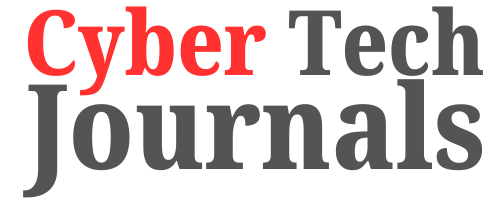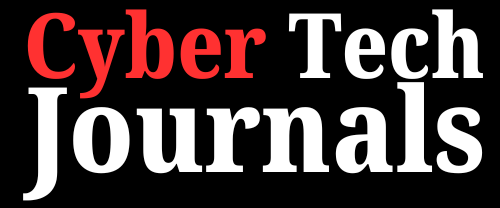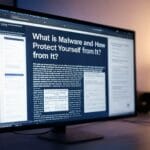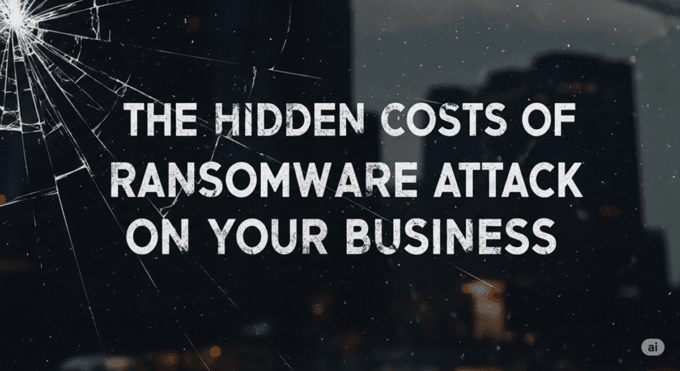Ransomware attacks have become one of the most pervasive and damaging cyber threats facing individuals, businesses, and governments. By 2025, ransomware is projected to cost organizations $30 billion annually , according to a report by Cybersecurity Ventures . These attacks encrypt critical data and demand a ransom for its release, often causing operational disruptions, financial losses, and reputational damage.
In this article, we’ll explore the essential steps for protection against ransomware in 2025. From proactive prevention measures to robust response strategies, these steps will help you safeguard your systems and data from this ever-evolving threat. Whether you’re an individual user or part of an enterprise security team, understanding these best practices is crucial for staying ahead of attackers. For more insights into ransomware trends, visit Cybersecurity Ventures’ Ransomware Report .
What Is Ransomware? Understanding the Threat
Ransomware is a type of malicious software that encrypts files on a victim’s device, rendering them inaccessible until a ransom is paid. Attackers typically demand payment in cryptocurrency to maintain anonymity. In 2025, ransomware has evolved beyond simple encryption—it now includes double extortion tactics , where attackers threaten to leak stolen data unless additional demands are met.
The rise of Ransomware-as-a-Service (RaaS) platforms has made it easier for even non-technical criminals to launch attacks. According to Sophos’ State of Ransomware 2024 , 66% of organizations were targeted by ransomware in the past year , highlighting the urgent need for robust defenses. Below is a breakdown of the most common ransomware attack vectors:
| Attack Vector | Description |
|---|---|
| Phishing Emails | Malicious links or attachments in emails. |
| Exploiting Vulnerabilities | Unpatched software vulnerabilities used as entry points. |
| Remote Desktop Protocol (RDP) | Unauthorized access to systems via weak or stolen credentials. |
| Supply Chain Attacks | Compromising third-party vendors to infiltrate networks. |
For a deeper dive into ransomware mechanics, check out Sophos’ Ransomware Guide .
Why Is Ransomware Still a Major Threat in 2025?
Despite increased awareness and cybersecurity investments, ransomware remains a significant threat due to several factors:
- Sophisticated Attack Techniques: Attackers leverage AI and automation to craft highly targeted campaigns.
- Increased Ransom Demands: The average ransom demand has surged to $1.5 million per incident , according to Coveware’s Q4 2024 Report .
- Expansion into Critical Sectors: Healthcare, education, and government agencies are increasingly targeted, amplifying the impact of attacks.
- Global Reach: Ransomware gangs operate across borders, making attribution and prosecution difficult.
To combat this growing threat, organizations must adopt a multi-layered defense strategy. Let’s explore the essential steps for protection.
Step 1: Employee Training and Awareness
- Why It Matters: Human error is the leading cause of ransomware infections, with 90% of breaches involving phishing , according to Verizon’s Data Breach Investigations Report 2024 .
- How to Implement:
- Conduct regular training sessions to educate employees about phishing emails, suspicious links, and social engineering tactics.
- Use simulated phishing campaigns to test and improve employee vigilance. Tools like KnowBe4 and Terranova Security offer gamified training modules.
- Encourage employees to report suspicious activities immediately.
- Impact: A well-trained workforce acts as the first line of defense against ransomware attacks. Learn more about phishing prevention here .
Step 2: Regular Software Updates and Patch Management
- Why It Matters: Unpatched software vulnerabilities are a common entry point for ransomware. Attackers exploit known flaws to gain unauthorized access.
- How to Implement:
- Establish a patch management policy to ensure all systems, applications, and firmware are updated promptly.
- Use automated tools like Microsoft Endpoint Manager or Ivanti to streamline patch deployment.
- Prioritize critical updates and test patches in a controlled environment before full deployment.
- Impact: Timely updates close security gaps, reducing the risk of exploitation. For more details, refer to CISA’s Patch Management Guide .
Step 3: Robust Backup Strategies
- Why It Matters: Backups are the ultimate safety net against ransomware. Without backups, victims may face permanent data loss or be forced to pay the ransom.
- How to Implement:
- Follow the 3-2-1 backup rule : Maintain three copies of data, stored on two different media types, with one copy offsite or in the cloud.
- Regularly test backups to ensure they can be restored quickly in an emergency.
- Use immutable storage solutions to prevent attackers from encrypting or deleting backups. Platforms like Veeam and Acronis offer ransomware-resistant backup options.
- Impact: Reliable backups allow organizations to recover data without paying the ransom. Explore backup solutions here .
Step 4: Network Segmentation and Access Control
- Why It Matters: Limiting access to critical systems reduces the spread of ransomware within a network.
- How to Implement:
- Segment networks to isolate sensitive data and systems from general users.
- Enforce the principle of least privilege (PoLP) , ensuring users only have access to the resources necessary for their roles.
- Disable unused services and ports to minimize attack surfaces.
- Impact: Network segmentation contains ransomware outbreaks, preventing widespread damage. For guidance, see NIST’s Network Security Framework .
Step 5: Endpoint Detection and Response (EDR) Solutions
- Why It Matters: Traditional antivirus software is no longer sufficient to detect advanced ransomware threats. EDR solutions provide real-time monitoring and behavioral analysis to identify anomalies.
- How to Implement:
- Deploy EDR tools like CrowdStrike Falcon , SentinelOne , or Microsoft Defender for Endpoint .
- Enable continuous monitoring and automated response capabilities to block ransomware before it spreads.
- Integrate EDR with SIEM (Security Information and Event Management) platforms for comprehensive threat visibility.
- Impact: EDR solutions detect and neutralize ransomware in its early stages, minimizing harm. Learn more about EDR technologies here .
Step 6: Email Security Enhancements
- Why It Matters: Email remains the primary vector for ransomware delivery, accounting for 75% of attacks in 2024, according to Proofpoint’s Threat Report .
- How to Implement:
- Use advanced email filtering tools like Proofpoint or Mimecast to block malicious attachments and links.
- Enable DMARC (Domain-based Message Authentication, Reporting, and Conformance) to prevent email spoofing.
- Train employees to recognize red flags, such as unexpected attachments or sender mismatches.
- Impact: Enhanced email security reduces the likelihood of successful ransomware infections. For more insights, visit Proofpoint’s Email Security Resources .
Step 7: Incident Response Planning
- Why It Matters: A well-prepared response plan minimizes downtime and recovery costs during a ransomware attack.
- How to Implement:
- Develop a detailed incident response plan that includes roles, responsibilities, and communication protocols.
- Conduct regular tabletop exercises to simulate ransomware scenarios and refine response strategies.
- Partner with external cybersecurity firms for forensic investigation and recovery support if needed.
- Impact: A proactive response plan ensures swift action, reducing the overall impact of an attack. Refer to NIST’s Incident Response Framework for guidance.
Step 8: Zero Trust Architecture
- Why It Matters: Traditional perimeter-based security models are insufficient against modern ransomware threats. Zero Trust assumes that threats may already exist within the network.
- How to Implement:
- Verify every user and device attempting to access resources, regardless of location.
- Use multi-factor authentication (MFA) to add an extra layer of security.
- Continuously monitor and validate user behavior to detect anomalies.
- Impact: Zero Trust architecture limits lateral movement, preventing ransomware from spreading across the network. Learn more here .
Step 9: Threat Intelligence and Collaboration
- Why It Matters: Staying informed about emerging ransomware trends helps organizations anticipate and mitigate risks.
- How to Implement:
- Subscribe to threat intelligence feeds from sources like AlienVault OTX , IBM X-Force , or Recorded Future .
- Participate in industry-specific Information Sharing and Analysis Centers (ISACs) to share and receive threat information.
- Monitor dark web forums for potential leaks or ransom demands related to your organization.
- Impact: Proactive threat intelligence enables faster detection and response to ransomware campaigns. For more details, explore IBM’s Threat Intelligence Platform .
Step 10: Legal and Regulatory Compliance
- Why It Matters: Non-compliance with data protection regulations can result in hefty fines and reputational damage during a ransomware attack.
- How to Implement:
- Ensure compliance with frameworks like GDPR , CCPA , and HIPAA , depending on your industry.
- Document and report ransomware incidents as required by law.
- Work with legal counsel to develop policies for handling ransom payments and negotiations.
- Impact: Compliance reduces legal liabilities and enhances trust among stakeholders. For regulatory insights, visit GDPR’s Official Website .
Final Words
Ransomware is a persistent and evolving threat, but with the right strategies, you can significantly reduce your risk of falling victim. By focusing on employee training, robust backups, advanced detection tools, and proactive planning, you can build a resilient defense against ransomware in 2025.
Stay informed, stay vigilant, and remember—prevention is always better than recovery. For further reading, explore resources like CISA’s Ransomware Guide , Sophos’ Ransomware Defense Tips , and Recorded Future’s Threat Intelligence Reports . Together, let’s fortify our digital defenses and protect what matters most.
Frequently Asked Questions (FAQs) About Ransomware Protection
1. What should I do if my system is infected with ransomware?
- Answer: Isolate the infected device, notify your IT security team, and avoid paying the ransom. Restore data from backups if available. Refer to CISA’s Ransomware Response Checklist for step-by-step guidance.
2. Can ransomware infect cloud storage?
- Answer: Yes, ransomware can encrypt files synced to cloud storage if local devices are compromised. Use immutable backups and enable versioning to protect cloud data. Learn more here .
3. Is it safe to pay the ransom?
- Answer: Paying the ransom does not guarantee data recovery and may encourage further attacks. Instead, focus on prevention and restoration strategies. For more details, read FBI’s Advisory on Ransom Payments .
4. How does MFA help prevent ransomware?
- Answer: Multi-factor authentication adds an extra layer of security, making it harder for attackers to gain unauthorized access. Visit Microsoft’s MFA Guide for implementation tips.
5. What industries are most targeted by ransomware?
- Answer: Healthcare, education, finance, and government sectors are frequent targets due to their reliance on critical data. For sector-specific insights, see Sophos’ Industry Reports .
6. Are small businesses at risk of ransomware?
- Answer: Yes, small businesses are increasingly targeted due to weaker security measures. Implement affordable solutions like Bitdefender GravityZone or WatchGuard Firebox for protection. Learn more here .
7. How often should backups be tested?
- Answer: Backups should be tested quarterly to ensure they can be restored successfully. Follow the 3-2-1 backup rule for redundancy. Explore testing best practices here .
8. What role does AI play in ransomware defense?
- Answer: AI enhances detection and response by analyzing patterns and identifying anomalies. Tools like Darktrace use AI to predict and mitigate ransomware threats. For more information, visit Darktrace’s AI Solutions .
9. How can I stay updated on ransomware trends?
- Answer: Subscribe to threat intelligence platforms like AlienVault OTX , IBM X-Force , or Recorded Future . Follow reputable cybersecurity blogs and news outlets for the latest updates.
10. Where can I find free ransomware protection tools?
- Answer: Free tools like Malwarebytes Anti-Ransomware Beta and Windows Defender offer basic protection. Combine these with regular updates and backups for enhanced security.

















Leave a comment